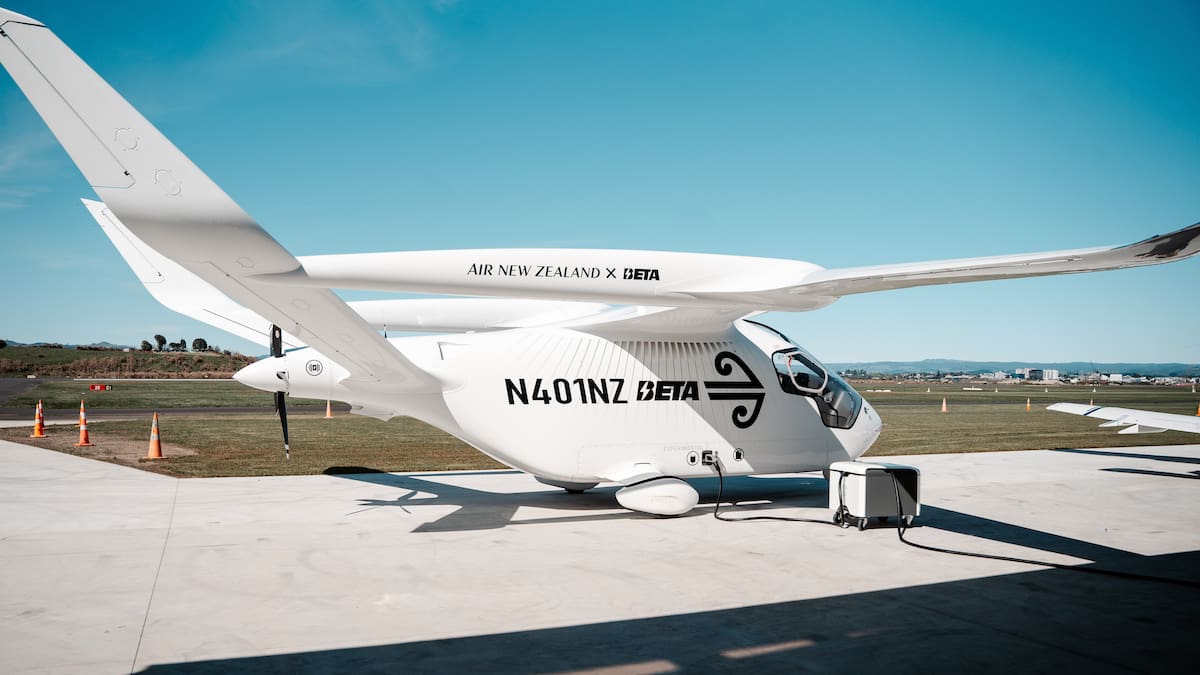Air NZ pilots Andrew Mercer and James Owen will work with Beta’s flight operations and engineering team.
They will fly in a range of conditions, flight manoeuvres and routes, building knowledge and training systems.
The airline said that knowledge would then be applied not just to local conditions, but globally.
Ravishankar said the programme was part of the airline’s long-term innovation and fleet strategy.
“While new propulsion technologies are still developing, Beta is leading the way and we’re witnessing a true technology step-change,” he said.
Ravishankar said 60% of New Zealand regional flights were less than 350km, and about 85% of the country’s electricity was from renewable sources.
He said those factors made New Zealand the perfect laboratory for next-generation aircraft.
The Alia could accommodate two crew members and up to 5.6cu m of cargo on missions of up to about 398km.
Simon Newitt, Beta Technologies‘ head of global sales, said New Zealand’s operating conditions provided insights for the aircraft’s global deployment.
“Our aircraft are designed to carry out all types of flight missions, and this programme represents the next step in validating and preparing our technology for rigorous, real-world environments.”
Kane Patena, Civil Aviation Authority director and chief executive, said the demo would help the CAA better understand emerging aircraft systems.
“Emerging aviation technologies don’t always fit into existing rules, so it’s our job to facilitate a clear pathway that helps operators safely bring these technologies into New Zealand’s unique aviation system.”
Mark Morgan, Hamilton Airport’s chief executive, said the local airspace was ideal for learning and understanding the systems, infrastructure, and logistics that would one day support next-generation aircraft nationwide.
After Hamilton, the Alia CX300 will travel to Wellington via Taupō, Napier, and Palmerston North.
Then it will prepare for Cook Strait crossings to Blenheim by the end of January.
The aircraft, which was made in Vermont, will return to Beta Technologies in the US early next year.
Kyle Clark, Beta Technologies’ founder, previously told the Herald the aircraft could carry 544kg of cargo.
The demonstration will involve flights of up to 200km.
Air New Zealand, which has leased the CX300 for four months, said the aircraft had quiet, zero-emission in-flight propulsion.
And with a conventional take-off and landing configuration, it was compatible with existing airport infrastructure.
Mobile 65kW chargers will be at Hamilton, Wellington and Blenheim airports, funded through the airline’s Climate and Nature Fund.
With these chargers, the aircraft can recharge in about 90 minutes.
John Weekes is a business journalist covering aviation and courts. He has previously covered consumer affairs, crime, politics and courts.

